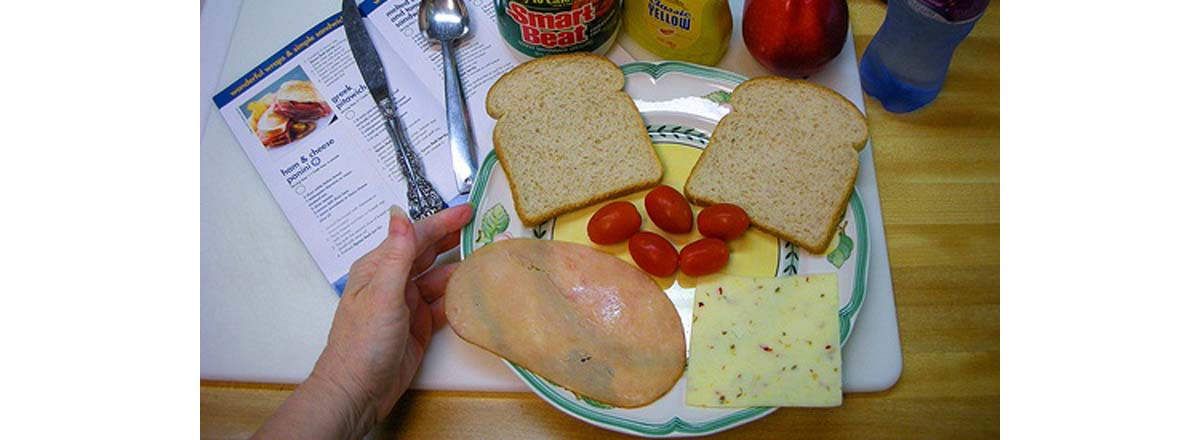Table of Contents
Weight loss is never linear – you tend to get a burst where you lose weight quickly, followed by a plateau. But what if you could eliminate these plateaus, and lose weight constantly?
Reduce Your Calorie Intake
Here’s a quick science lesson: The number one most important factor in losing weight is calorie balance. To lose weight, burn fat and get lean, you need to consume fewer calories than you burn. This forces your body to turn to its fat stores for energy, rather than relying on the food you’re eating.

Calorie balance is a delicate issue though. While you want to be in a deficit, eating too few calories can make you feel tired, irritable, lethargic, and actually cause you to burn lean muscle tissue, rather than fat.
Ideally, you should have a deficit of around 500 calories per day for healthy and sustainable weight loss.
This will give you around a pound of pure fat loss every week. Use an Online calorie calculator to work out your calorie needs. It should take into account your age, weight, height, gender and activity levels. You’ll get a figure which is your maintenance calorie intake per day – the amount you’d need to eat to maintain your weight. Subtract 500 from this and you’re good to go.
Read more: 8 Weight Loss Myths Debunked
Get Strict With Your Food
How many times have you grabbed a few chips from a bowl in the kitchen, or eaten a few bits of candy and though “It’s only small, it won’t matter”?
Well, the truth is, it does matter. If you do this a couple of times a day, every day of the week, you can easily add over 1000 calories onto your weekly intake. There are two strategies to deal with this.
Firstly, weigh and measure everything you eat for 2 weeks. This may sound obsessive, but it’s completely necessary, at least for a while. So many people aren’t aware of how much they’re eating, and how many calories they’re consuming. Take this data, and input it into an Online calorie counter. You can then ensure you’re meeting your calorie requirements. After two weeks, you should have a good idea of how to eye-ball portion sizes, so there shouldn’t be any need to measure lean meats and vegetables any more. You should still weigh your portions of high-carb and high-fat foods though – rice, pasta, potatoes, bread, cereals, nuts, oils, and dairy products, etc.
Well, the truth is, it does matter. If you do this a couple of times a day, every day of the week, you can easily add over 1000 calories onto your weekly intake. There are two strategies to deal with this.
Firstly, weigh and measure everything you eat for 2 weeks. This may sound obsessive, but it’s completely necessary, at least for a while. So many people aren’t aware of how much they’re eating, and how many calories they’re consuming. Take this data, and input it into an Online calorie counter. You can then ensure you’re meeting your calorie requirements. After two weeks, you should have a good idea of how to eye-ball portion sizes, so there shouldn’t be any need to measure lean meats and vegetables any more. You should still weigh your portions of high-carb and high-fat foods though – rice, pasta, potatoes, bread, cereals, nuts, oils, and dairy products, etc.
Food Diary
If you eat something, write it in your diary. Not only does this keep you strict and honest about what you eat, it also allows you to go back and assess your intake over a set period of time, and determine where you might be struggling. Be honest. Cheating will only hurt yourself.
Weigh, Measure and Assess
Don’t get too caught up in relying on the scales as a gauge of progress.
Weight yourself no more than once a week – always on the same day, at the same time – preferably first thing in the morning on an empty stomach.
Take progress photos and measure your waist, hips, chest, arms, thighs and calves once a month too. These are extremely useful, as even if the scale doesn’t budge, these should all improve.
Train Harder
Set training goals and challenges every session and aim to beat them. If you train the same, you stay the same, so your workouts always need to be progressing.
If you bench presses 100 lbs for 10 reps last session, aim for 110 lbs, or do 11 reps next workout. Likewise if you ran 3 miles in 30 minutes, shoot for 28 or 29 minutes next time.
If you bench presses 100 lbs for 10 reps last session, aim for 110 lbs, or do 11 reps next workout. Likewise if you ran 3 miles in 30 minutes, shoot for 28 or 29 minutes next time.
Macronutrients
Macronutrients are protein, carbohydrate and fat. While calories are the key to weight loss, macros matter too. Research suggests that higher protein diets, containing a low to moderate amount of carbohydrate and fat result in higher weight loss than low protein, high carb diets. Keep your calorie intake the same, but eat more protein from meat, fish, eggs and dairy products. Cut your grains in favor of vegetables and low sugar fruits, and eat small amounts of fat from peanut butter, nuts, olive oil and avocados.Use these strategies to break through your weight loss plateaus. Implement one at a time, always keeping something in your arsenal should your progress stall again.
- “How To Break Thru Weight Loss Plateaus” Accessed on August 19th, 2012 Retrieved from http://scoobysworkshop.com/2012/06/13/how-to-break-thru-weight-loss-plateau/
- Photo courtesy of sharman on Flickr: www.flickr.com/photos/sharman/10377940
- Photo courtesy of judybaxter on Flickr: www.flickr.com/photos/judybaxter/4422902070

